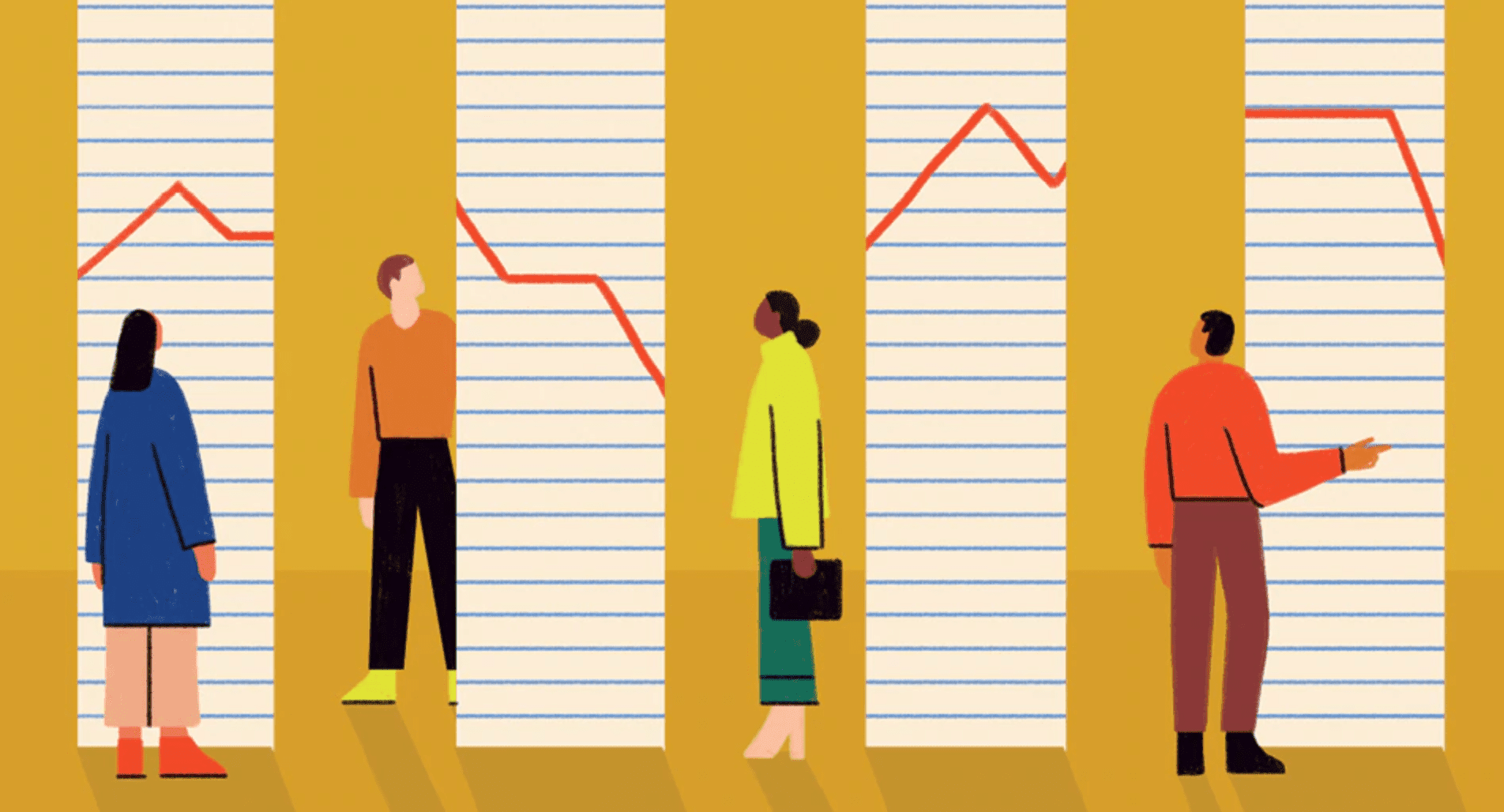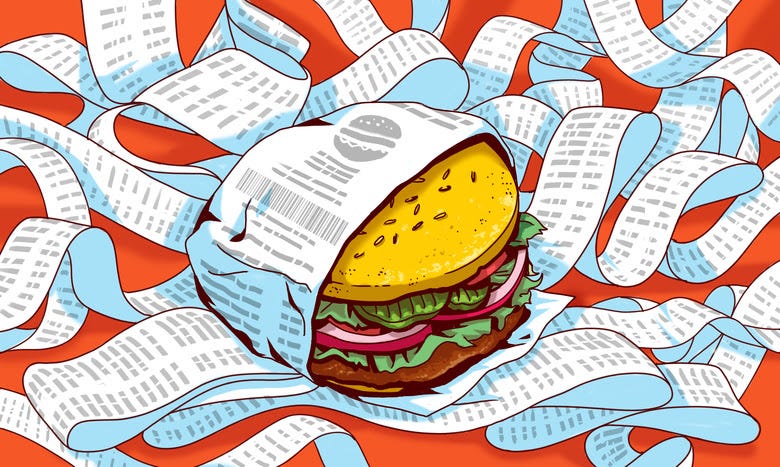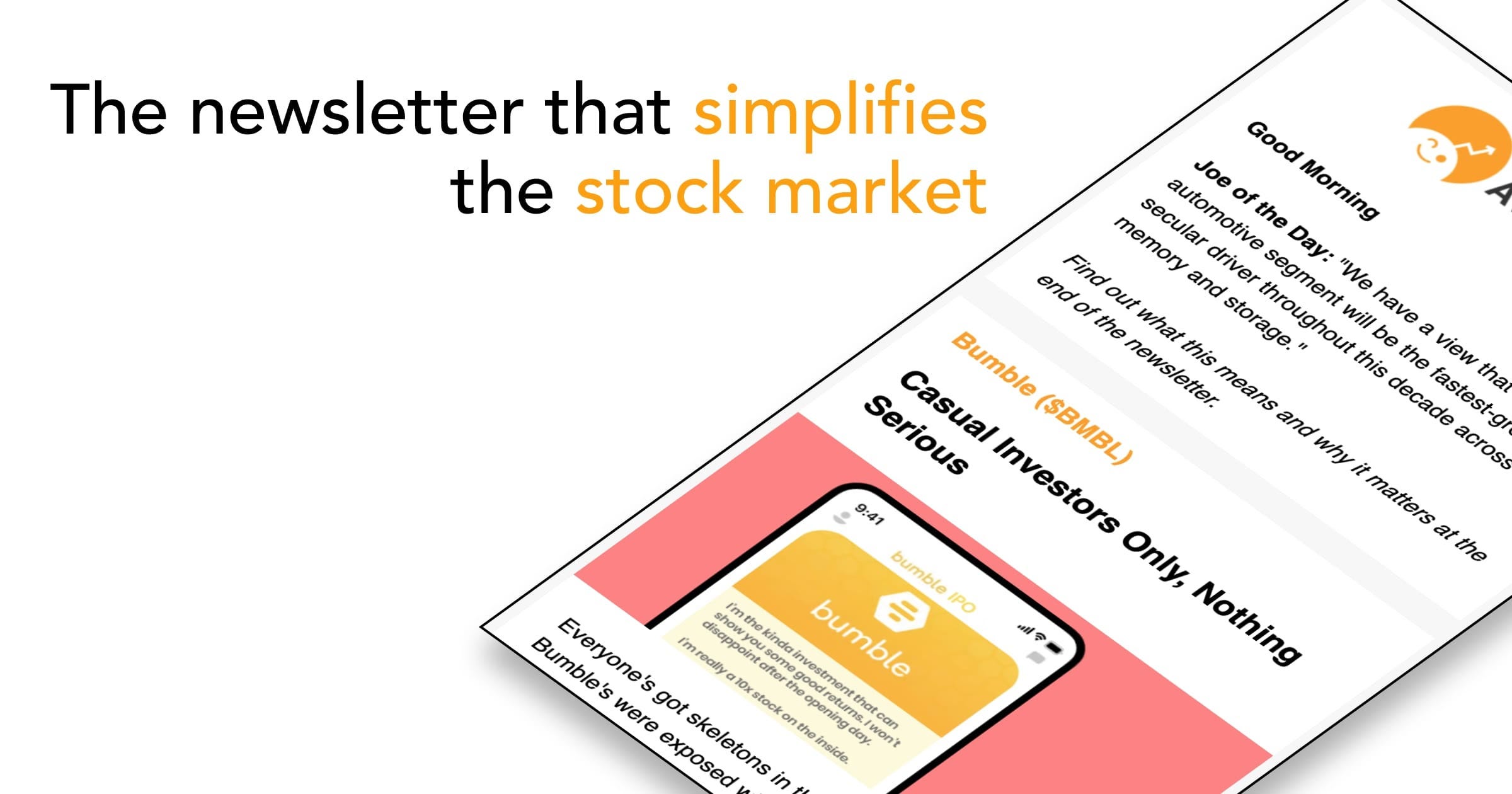TGIT! Tuesday means there’s still some hope for the week as we've been battling moody markets. Today we’ll take a macro perspective on it, apply what we’ve learned from last year’s recession to the future, and help keep your financial peripherals in check.
A YEAR AFTER THE LOCKDOWNWhat did we learn from the 2020 recession?The unemployment numbers don’t tell the whole story. The 2020 recession was one of the worst overall economic hits we’ve taken in the last decade. The unemployment rate in April 2020 topped out at a whopping 14.8% overall, trickling down to 10.2% in July, 6.9% in October, and ending the year at 6.7% for the month of December. February of 2021 gave us another 0.5% drop down to 6.2%, leaving us just above (2% give or take) the subjectively-termed, “full-employment” level. Although it seems as if we’ve made a pretty valiant recovery from a historic fall last spring, it’s worth noting that the pandemic’s onslaught eliminated many fringe jobs in a hurry, and some of those will never come back. 2020 saw retail workers often being hit the hardest, with many physical locations closing for the last time, never to open those positions again. Unemployment income is taxable, whether that makes sense or not. Many US recipients, some of them first-timers, of unemployment benefits are surprised to see they owe taxes this time around, instead of getting a refund. Unemployment is no W-2 salary, and the government isn't automatically withholding taxes from these checks. Unemployment is taxed as regular income, whether that makes sense or not. Many commentators and politicians obviously see this, but that addition failed to make the cut in the $1.9 million dollar stimulus package, which... certainly made plenty of room for some other things. Panic selling usually ends up costing you more than holding. Those who sold their investment assets before or during the drastic marketwide selloff last March missed out on an equally drastic recovery and overall bull market for the rest of 2020. The one-year return on the S&P 500 from March 4th last year is roughly 28% overall, despite the massive plummet it took last spring. If that didn’t cause short-sellers to shed a tear, the Russell 2000 will. The RUT is up about 51% since this time last March, despite last year’s panic and recent uncertainty. Those are historic gains, and certainly shouldn’t be expected after every recession, but this exaggerated recovery emphasizes what we’ve already known about time in the market. To state the obvious, we can’t forecast a recession like the weather. From the perspective of mid-summer, it would’ve looked quite prophetic to have called for a V-shaped recovery last March. As time went on, it became clear that it’s not that simple, and the COVID-19 recession was not just a quick dip and rip. This recession is still ongoing for many Americans across the country, even if the popular statistics don’t always bear it out. The thing is, it also hasn’t been a W-shaped recovery either. Even if some analysts are worried about a second crash pending as bond rates tick north and the markets trend tumultuously, the fact is that we’re all just “prepared for the worst, but still praying for the best” as world-renowned philosopher Lil Wayne so elegantly put it in 2011. Attempts made at predicting the path of a recession are typically entertainment at most, and anecdotal lucky guesses at best. PRESENTED BY PUBLICAn investment app supporting women in chargeEven though a lot of progress has been made on gender equity in the world of business and finance, there is still a long way to go. For example, American corporations are very much men-led today—only 5% of CEOs of S&P 500 companies are female. But did you know that women offer a diversity of leadership styles, experiences, and backgrounds that benefit their companies’ bottom line?
So how do you invest in women-led companies?🧑🤝🧑 Read about how emerging female business leaders like Jane Fraser and Julia Hartz are transforming their own organizations. Following select women leaders and seeing them in action will give you the conviction to invest. If you don’t know where to start, check out Public.com’s “women in charge” theme. 📈 If you’re a fan of passive investing, consider women-focused funds. There are ETFs specifically designed to track companies that exhibit gender diversity in senior leadership roles. Rather than picking and choosing female-led companies yourself, invest in a fund that makes it easy for you to support the cause. 🍕 Have only small change to invest? Not to worry! With Public’s fractional shares, you can buy slices of stocks, so you can own more slices of the companies you believe in. Learn more on Public.com. They are offering $10 in your Public account with a deposit of $1 or more. *Offer valid for U.S. residents 18+ and subject to account approval. See important disclosures. TAXESThe ultra-rich tax. What does that mean for me?If this tax applies to you, we need to talk. Are you into angel investing, perhaps? The ultra-rich tax is a democratically proposed amendment to the US tax code that would impose a new 2% annual tax on households and trusts with a net worth between $50 million and $1 billion, and 3% on those with a net worth above 1$ billion, which would actually then increase to 6% if a medicare-for-all plan is ever implemented. The purpose of this wealth tax is part of an attempt to curtail and tame the growing wealth gaps we continue to see across America, which are at their worst levels ever. How does this affect you? It probably doesn’t, and at the moment it has a long way to go to even be passed into legislation. Skeptics and subject matter experts suggest it’s not that simple to determine the hard net worth of an individual, which is almost always a floating number for these cases. This isn’t to mention the fact that oftentimes wealthy individuals pay some of the lowest tax rates out there, due to their arsenal of disposable liquidity and ultimately, tax-lowering strategies available. There are of course potential trickle-down effects of the increased tax revenue, depending upon where that money is allocated. Much of it is said to be headed toward childhood and early education, as well as $100 billion going to the IRS to ensure a 30% audit rate of the super-wealthy. So...if that’s you, you might have a few less loopholes. *Need to brush up on some tax fundamentals? If so, take this quiz-based, bite-size lesson: BUDGETINGWhat to do when your food bill keeps creeping upIf you’ve noticed your food expenses rising lately, then good job. You’re already doing better than the average American by keeping track of your expenses, so...be proud. No, but seriously, pick-up your takeout orders instead of getting them delivered. Overall statistics show a big jump in the overall user base, and revenues, of food delivery services in 2020, likely due to many stay-at-home orders. Regardless, the popularity of apps like DoorDash and others has skyrocketed, and so has their burden on your budget, with the average delivery fee ranging from $5 to $8 per order. Create a written grocery budget separated from your dining out budget, and make grocery lists. Planning and intentionality will go a surprisingly long way to mitigate excess spending that can seem menial at the moment, but ultimately reflect on your monthly budget in a big way. Taking the time to do this will reduce your monthly food expenses, and give you a sense of pride and responsibility as well. Tooltip 💡 —after you've gone shopping from your list, save all your receipts and scan them to earn points towards gift cards, all for free via Fetch Rewards. You actually don’t need that much. On top of all of this, the US boasts one of the most impressive, if you will, food waste rates in the world, at an estimated 30-40% of the food supply. So...did you really need to buy the family size? Probably not, and you’re more likely to overdo it than underdo it. And don’t blindly worship brand names. Is there really that much of a difference between the Member’s Mark pickles and the more expensive ones on your list? Guys, come on, they’re just salty cucumbers. Oftentimes you’re paying more for a label when the items are eerily similar in nature, without one being identifiably better than the other. THE AVERAGE JOEOur friends at The Average Joe write a 2x-weekly newsletter read by 15,000+ investors that uncover market opportunities and investing trends. Save 1,000+ hours with their coverage on emerging trends and upcoming IPOs. Subscribe here to the free newsletter. ✨ TRENDING ON FINNY AND BEYOND
How did you like Finny's The Gist today? (Click to vote) That’s it for today. If you’ve enjoyed today’s edition, please invite your friends to join Finny. Have a great rest of the week! The Finny Team Finny is a personal finance education start-up offering free, game-based personalized financial education, a supportive discussion forum, and simple stock and fund tools (aka Finnyvest). Our mission is to make learning about all things money fun and easy!The Gist is Finny's newsletter to our community members who are looking to make and save more money, protect their finances and be their own bosses! It's sent twice a week (Tues/Thurs).Sponsors are mission-aligned partners that offer unique and valuable services at little to no cost for our users. We only feature those partners we love using ourselves. And we're thankful for their sponsorship to enable Finny to operate! Here's our advertiser disclosure.If you have any feedback for us, please send us an email to feedback@askfinny.com.If you liked this post from Finny: The Gist, why not share it? |
💡 Covid anniversary
Subscribe to:
Post Comments (Atom)
Author: Kopral Muda










No comments:
Post a Comment